ethyl 3-ethoxy-2-(2,2,2-trifluoroacetyl)acrylate

ethyl 3-ethoxy-2-(2,2,2-trifluoroacetyl)acrylate structure
|
Common Name | ethyl 3-ethoxy-2-(2,2,2-trifluoroacetyl)acrylate | ||
|---|---|---|---|---|
| CAS Number | 571-55-1 | Molecular Weight | 240.176 | |
| Density | 1.2±0.1 g/cm3 | Boiling Point | 211.6±40.0 °C at 760 mmHg | |
| Molecular Formula | C9H11F3O4 | Melting Point | N/A | |
| MSDS | USA | Flash Point | 79.7±22.2 °C | |
| Name | Ethyl 2-ethoxymethylene-4,4,4-trifluoro-3-oxobutyrate |
|---|---|
| Synonym | More Synonyms |
| Density | 1.2±0.1 g/cm3 |
|---|---|
| Boiling Point | 211.6±40.0 °C at 760 mmHg |
| Molecular Formula | C9H11F3O4 |
| Molecular Weight | 240.176 |
| Flash Point | 79.7±22.2 °C |
| Exact Mass | 240.060944 |
| PSA | 52.60000 |
| LogP | 3.69 |
| Vapour Pressure | 0.2±0.4 mmHg at 25°C |
| Index of Refraction | 1.406 |
| Storage condition | 2-8°C |
|
Ethyl 2-(Ethoxymethylene)-4,4,4-trifluoro-3-oxobutyrate Revision number: 5.3
SAFETY DATA SHEET Section1. IDENTIFICATION Product name:Ethyl 2-(Ethoxymethylene)-4,4,4-trifluoro-3-oxobutyrate 5.3 Section2. HAZARDS IDENTIFICATION
GHS classification
PHYSICAL HAZARDSNot classified HEALTH HAZARDS Skin corrosion/irritationCategory 2 Category 2A Serious eye damage/eye irritation ENVIRONMENTAL HAZARDSNot classified GHS label elements, including precautionary statements Pictograms or hazard symbols Signal wordWarning Hazard statementsCauses skin irritation Causes serious eye irritation Precautionary statements: Wash hands thoroughly after handling. [Prevention] Wear protective gloves/eye protection/face protection. IF IN EYES: Rinse cautiously with water for several minutes. Remove contact lenses, [Response] if present and easy to do. Continue rinsing. If eye irritation persists: Get medical advice/attention. IF ON SKIN: Gently wash with plenty of soap and water. If skin irritation occurs: Get medical advice/attention. Take off contaminated clothing and wash before reuse. Section3. COMPOSITION/INFORMATION ON INGREDIENTS Substance/mixture:Substance Components:Ethyl 2-(Ethoxymethylene)-4,4,4-trifluoro-3-oxobutyrate Percent:>96.0%(GC) CAS Number:571-55-1 Synonyms:2-(Ethoxymethylene)-4,4,4-trifluoro-3-oxobutyric Acid Ethyl Ester , Ethyl 3-Ethoxy-2- (2,2,2-trifluoroacetyl)acrylate , 3-Ethoxy-2-(2,2,2-trifluoroacetyl)acrylic Acid Ethyl Ester Chemical Formula:C9H11F3O4 Ethyl 2-(Ethoxymethylene)-4,4,4-trifluoro-3- oxobutyrate Section4. FIRST AID MEASURES Inhalation:Remove victim to fresh air and keep at rest in a position comfortable for breathing. Get medical advice/attention if you feel unwell. Skin contact:Remove/Take off immediately all contaminated clothing. Gently wash with plenty of soap and water. If skin irritation or rash occurs: Get medical advice/attention. Eye contact:Rinse cautiously with water for several minutes. Remove contact lenses, if present and easy to do. Continue rinsing. If eye irritation persists: Get medical advice/attention. Ingestion:Get medical advice/attention if you feel unwell. Rinse mouth. A rescuer should wear personal protective equipment, such as rubber gloves and air- Protection of first-aiders: tight goggles. Section5. FIRE-FIGHTING MEASURES Suitable extinguishingDry chemical, foam, water spray, carbon dioxide. media: Unsuitable extinguishing Solid streams of water media: Specific hazards arising Take care as it may decompose upon combustion or in high temperatures to from the chemical:generate poisonous fume. Precautions for firefighters: Fire-extinguishing work is done from the windward and the suitable fire-extinguishing method according to the surrounding situation is used. Uninvolved persons should evacuate to a safe place. In case of fire in the surroundings: Remove movable containers if safe to do so. Special protectiveWhen extinguishing fire, be sure to wear personal protective equipment. equipment for firefighters: Section6. ACCIDENTAL RELEASE MEASURES Personal precautions,Use personal protective equipment. Keep people away from and upwind of spill/leak. protective equipment and Ensure adequate ventilation. Entry to non-involved personnel should be controlled emergency procedures: around the leakage area by roping off, etc. Environmental precautions: Prevent product from entering drains. Methods and materials for Absorb spilled material in a suitable absorbent (e.g. rag, dry sand, earth, saw-dust). containment and cleaning In case of large amount of spillage, contain a spill by bunding. Adhered or collected up: material should be promptly disposed of, in accordance with appropriate laws and regulations. Section7. HANDLING AND STORAGE Precautions for safe handling Technical measures:Handling is performed in a well ventilated place. Wear suitable protective equipment. Prevent generation of vapour or mist. Wash hands and face thoroughly after handling. Use a ventilation, local exhaust if vapour or aerosol will be generated. Advice on safe handling: Avoid contact with skin, eyes and clothing. Conditions for safe storage, including any incompatibilities Keep container tightly closed. Store in a refrigerator. Storage conditions: Store away from incompatible materials such as oxidizing agents. Heat-sensitive Packaging material:Comply with laws. Section8. EXPOSURE CONTROLS / PERSONAL PROTECTION Engineering controls:Install a closed system or local exhaust as possible so that workers should not be exposed directly. Also install safety shower and eye bath. Personal protective equipment Respiratory protection: Vapor respirator. Follow local and national regulations. Protective gloves. Hand protection: Ethyl 2-(Ethoxymethylene)-4,4,4-trifluoro-3- oxobutyrate Section8. EXPOSURE CONTROLS / PERSONAL PROTECTION Eye protection:Safety glasses. A face-shield, if the situation requires. Skin and body protection: Protective clothing. Protective boots, if the situation requires. Section9. PHYSICAL AND CHEMICAL PROPERTIES Physical state (20°C):Liquid Form:Clear Colour:Slightly pale yellow - Yellow Odour:No data available pH: No data available Melting point/freezing point:No data available Boiling point/range:120°C/1.3kPa Flash point:104°C Flammability or explosive limits: Lower:No data available Upper:No data available Relative density:1.24 Solubility(ies): [Water]No data available [Other solvents]No data available Section10. STABILITY AND REACTIVITY Chemical stability:Stable under proper conditions. Possibility of hazardous No special reactivity has been reported. reactions: Incompatible materials: Oxidizing agents Hazardous decomposition Carbon monoxide, Carbon dioxide, Hydrogen fluoride products: Section11. TOXICOLOGICAL INFORMATION Acute Toxicity:No data available Skin corrosion/irritation: No data available Serious eyeNo data available damage/irritation: Germ cell mutagenicity: No data available Carcinogenicity: IARC =No data available NTP =No data available Reproductive toxicity:No data available Section12. ECOLOGICAL INFORMATION Ecotoxicity: No data available Fish: Crustacea:No data available No data available Algae: Persistence / degradability: No data available No data available Bioaccumulative potential(BCF): Mobility in soil Log Pow:No data available No data available Soil adsorption (Koc): Henry's LawNo data available constant(PaM3/mol): Ethyl 2-(Ethoxymethylene)-4,4,4-trifluoro-3- oxobutyrate Section13. DISPOSAL CONSIDERATIONS Recycle to process, if possible. Consult your local regional authorities. You may be able to burn in a chemical incinerator equipped with an afterburner and scrubber system. Observe all federal, state and local regulations when disposing of the substance. Section14. TRANSPORT INFORMATION Hazards Class:Does not correspond to the classification standard of the United Nations Not listed UN-No: Section15. REGULATORY INFORMATION Safe management ordinance of dangerous chemical product (State Council announces on January 26, 2002 and revised on February 16,2011): Safe use and production, the storage of a dangerous chemical, transport, loading and unloading were prescribed. SECTION 16 - ADDITIONAL INFORMATION N/A |
| Personal Protective Equipment | Eyeshields;Gloves |
|---|---|
| Hazard Codes | Xn:Harmful; |
| Risk Phrases | R22;R36/37/38 |
| Safety Phrases | S26-S36/37/39-S23 |
| RIDADR | NONH for all modes of transport |
| WGK Germany | 3 |
| HS Code | 2918990090 |
|
~95% 
ethyl 3-ethoxy-... CAS#:571-55-1 |
| Literature: Palanki; Erdman; Gayo-Fung; Shevlin; Sullivan; Goldman; Ransone; Bennett; Manning; Suto Journal of medicinal chemistry, 2000 , vol. 43, # 21 p. 3995 - 4004 |
|
~60% 
ethyl 3-ethoxy-... CAS#:571-55-1 |
| Literature: Pryadeina; Burgart; Saloutin; Slepukhin; Kazheva; Shilov; D'yachenko; Chupakhin Russian Journal of Organic Chemistry, 2007 , vol. 43, # 7 p. 945 - 955 |
| Precursor 3 | |
|---|---|
| DownStream 10 | |
| HS Code | 2918990090 |
|---|---|
| Summary | 2918990090. other carboxylic acids with additional oxygen function and their anhydrides, halides, peroxides and peroxyacids; their halogenated, sulphonated, nitrated or nitrosated derivatives. VAT:17.0%. Tax rebate rate:13.0%. . MFN tariff:6.5%. General tariff:30.0% |
|
High-speed microwave-assisted synthesis of the trifluoromethylpyrazol-derived canonical transient receptor potential (TRPC) channel inhibitor Pyr3.
ChemMedChem 4(11) , 1816-8, (2009)
|
|
|
Comparisons of pKa and log P values of some carboxylic and phosphonic acids: synthesis and measurement.
AAPS PharmSci 3(2) , E10, (2001) The changes in the physiochemical properties accompanying the substitution of a phosphonic acid group for a carboxylic acid group on various heterocyclic platforms was determined. A series of low mole... |
|
|
Synthesis and cardiotonic activity of 2-substituted 5-cyano-1,6-dihydro-6-oxo-3-pyridinecarboxylic acids and their methyl or ethyl esters.
Il Farmaco 47 , 427, (1992) The synthesis of ethyl or methyl esters of 5-cyano-1,6-dihydro-6-oxo-3- pyridinecarboxylic acids carrying as 2-substituent a polar group such as CO2C2H5, (CH2)2CO2CH3, (CH2)3CO2C2H5, CH2OCH3, or CF3 g... |
| Ethyl (2E)-2-(ethoxymethylene)-4,4,4-trifluoro-3-oxobutanoate |
| Ethyl 2-(ethoxymethylene)-4,4,4-trifluoroacetoacetate |
| MFCD02677683 |
| Butanoic acid, 2-(ethoxymethylene)-4,4,4-trifluoro-3-oxo-, ethyl ester, (2E)- |
| ethyl 3-ethoxy-2-(2,2,2-trifluoroacetyl)acrylate |



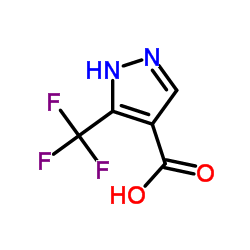 CAS#:543739-84-0
CAS#:543739-84-0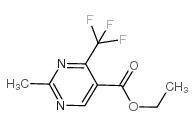 CAS#:149771-10-8
CAS#:149771-10-8 CAS#:188781-17-1
CAS#:188781-17-1 CAS#:98534-81-7
CAS#:98534-81-7 CAS#:98534-80-6
CAS#:98534-80-6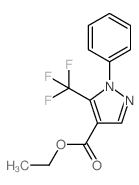 CAS#:741717-63-5
CAS#:741717-63-5 CAS#:142818-01-7
CAS#:142818-01-7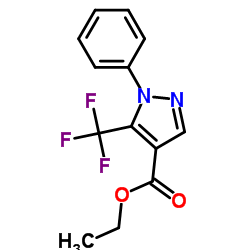 CAS#:112055-34-2
CAS#:112055-34-2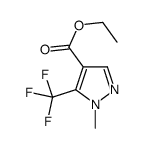 CAS#:231285-86-2
CAS#:231285-86-2 CAS#:111493-74-4
CAS#:111493-74-4
